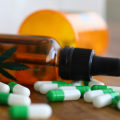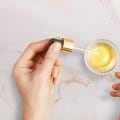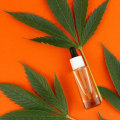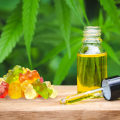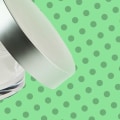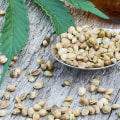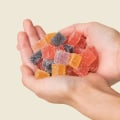When it comes to understanding how CBD is absorbed in the body, it's important to know that it is metabolized in the liver and sent into the bloodstream. This is similar to how vitamins and other supplements are taken. The body absorbs fatty compounds, such as CBD oil, by encapsulating them with a special molecule. This molecule has a “fat-loving” (lipophilic) end and a “water-loving” (hydrophilic) end.
The molecules form a sphere around the CBD oil molecule and the lipophilic end attaches to the fatty compound, pointing the hydrophilic end outwards. This allows the sphere (with the CBD oil inside) to solubilize in water and pass through the mucous membrane into the bloodstream. Inhaling CBD is another way to avoid the quick-passing effect that occurs in the digestive tract. When inhaled, CBD is absorbed by the alveoli (pulmonary membrane) and passes into the bloodstream.
This can be done by smoking or vaping the CBD product. Smoking has been a typical way of consuming CBD or cannabis for a long time, however, it has a lower bioavailability rate than vaping, of 31%. Vaping involves heating the CBD to a certain temperature until it turns into vapor and has a bioavailability of up to 56%.CBD edibles, such as gummies, truffles or even mints, are also available and do a great job masking any “weed” flavor. Piperine stimulates the transporter molecules in the intestinal lining, which are responsible for carrying CBD across the intestinal membrane and reaching the bloodstream.
However, some studies have shown that CBD can protect nerves from damage and that it is a powerful anti-inflammatory. Taking CBD oil sublingually and holding it under the tongue for several seconds before swallowing it allows the mucous membrane of the mouth to absorb the CBD and avoid the digestive system. The oral bioavailability of any substance, such as CBD, is a measure of the speed and degree at which it reaches the systemic circulation. CBD beverages are becoming increasingly popular as they allow people to more easily benefit from this cannabinoid in their daily lives. Topical application of CBD has a low absorption rate, so you should generously use CBD lotions, ointments and balms. Before trying CBD, you should also talk to your doctor, especially if you're currently taking any medications. Taking CBD edible products may not be the most effective way to take it because of its first-pass effect which prevents absorption of cannabinoids into the blood.
Additionally, CBD can interact with prescription medications such as antibiotics, antidepressants, blood thinners, and more.
